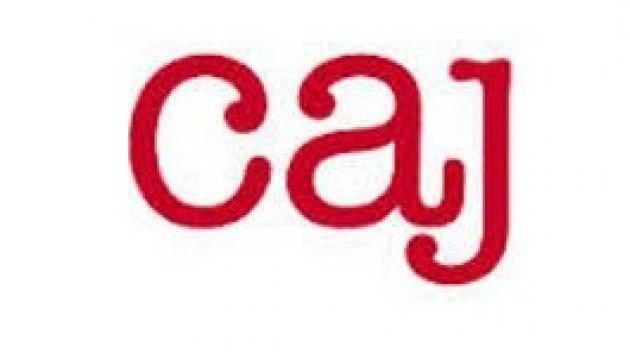At #CAJ16, conference attendees will help guide the course of the Canadian Association of Journalists.
By Nick Taylor-Vaisey
Canadian journalists seem always to be standing at a crossroads, don’t we? Behind us is an apparent golden age, a time when newsrooms didn’t face the same existential threats we face today. Ahead of us is a future where journalism remains essential and the tools at our disposal offer limitless opportunities—but we’re preoccupied by the spectre of job losses as we do what we do best.
That apparent crossroads has endured my entire career. Jobs have been scarce for my eight years as a journalist. Colleagues everywhere have risen to the challenge of shrinking newsrooms every step of the way. Every journalism conference I’ve attended is about change and adaptation. Your experience must be similar. It nears cliché.
The Canadian Association of Journalists’ national conference, #CAJ16, gathers this weekend in Edmonton, a city that felt the wrath of job cuts earlier this year. The CAJ lamented those newsroom losses, as we do every time a journalist is shown the door—but we want to give our members a conference that does more than lament. Our opening plenary will acknowledge and confront the industry-wide challenges with which we’re all coping, but that’s only #CAJ16’s opening act. Everything else is about questioning what doesn’t work and examining what does.
We’ll close the conference with a conversation about what we can do better—how the CAJ can do more than passively observe shrinking newsrooms and effectively help reporters forced to do more with less. The CAJ’s national board deliberates constantly on how to take a novel approach to our advocacy in the wake of layoffs. We risk sounding unoriginal every time we remind corporate leaders that fewer reporters means fewer stories—and fewer stories mean a less informed citizenry.
When Postmedia announced cuts across Canada, we opened the floodgates on Twitter and found valuable stories written and photographed by every recently laid-off journalist we could find. We took a cue from Globe and Mail reporter Selena Ross and calculated the approximate number of stories that would go untold with 90 fewer journalists coming into work every day.
Some of those journalists tweeted back, and emailed us, with appreciation. They were happy to have been recognized for their hard work, whether they’d been on staff for two years or two decades. Maybe that simple act of honouring work was enough on that particularly dark day. But there’s something so defeatist about saluting a job well done and simply moving on. It tacitly accepts the outcome. Is that all we should do when the hammer comes down?
Before that critical closing discussion, #CAJ16 will take a hard look at our industry’s challenges, including panels on sponsored content, tablet journalism, local news and mainstream coverage of missing and murdered Indigenous women and girls.
We’ll also confront the money question. Delegates will find presenters who are looking at alternative funding models, including mainstream partnerships and lucrative fellowships. We hope everyone soaks it up.
In our last session, we’ll ask everyone in the room to bring their best ideas and their harshest criticism of the CAJ’s advocacy work. But we need not stop with that room. Our national board wants to hear from every corner of Canadian journalism—freelancers, students, Indigenous journalists, educators, staff reporters, print and digital and broadcast journalists, young and old, east and west.
Everyone. Tell us how we can help you. We’ll be listening.
Nick Taylor-Vaisey is the president of the Canadian Association of Journalists. He spends his daytime hours at Maclean's magazine, where he is a digital editor.

